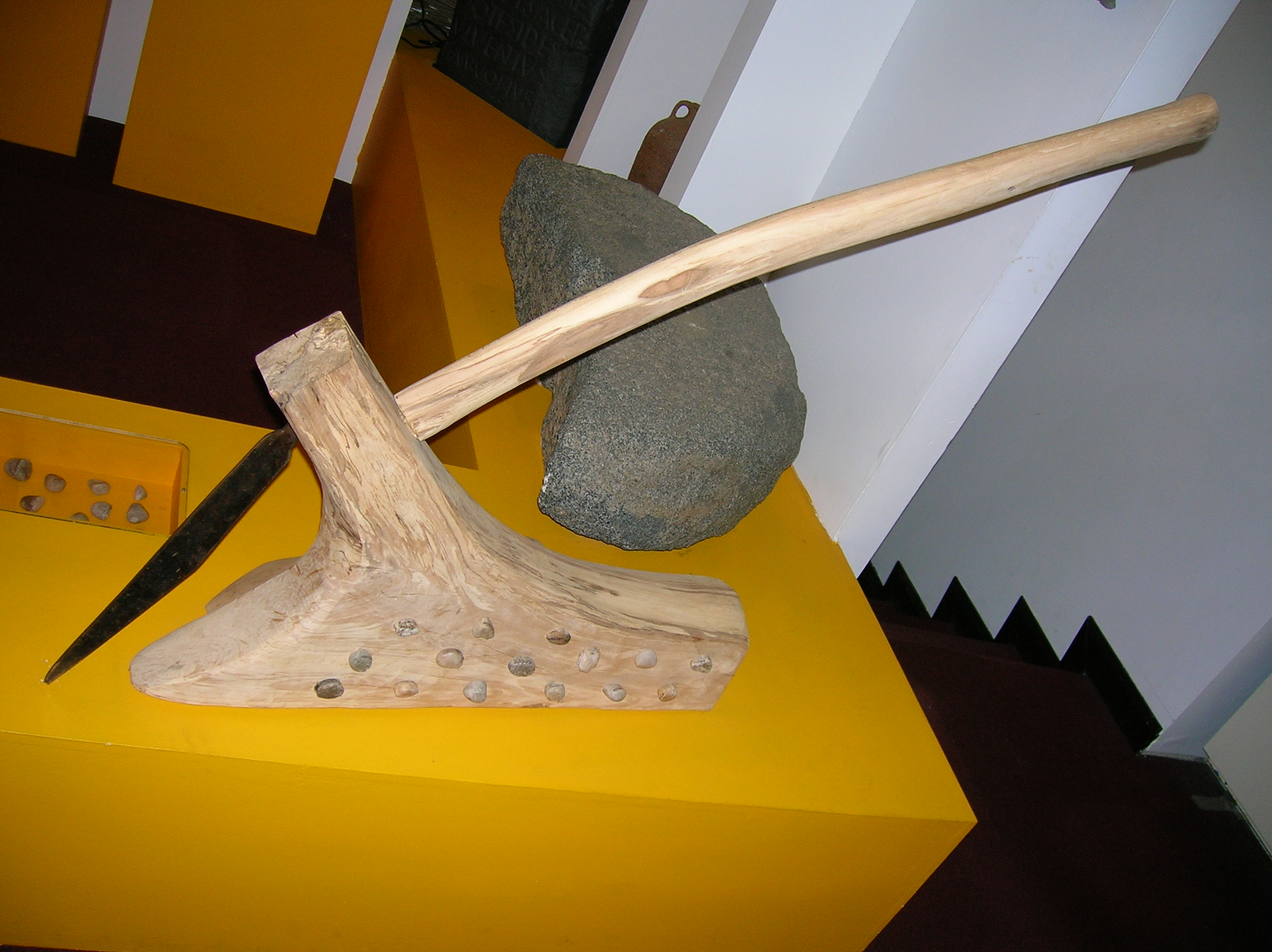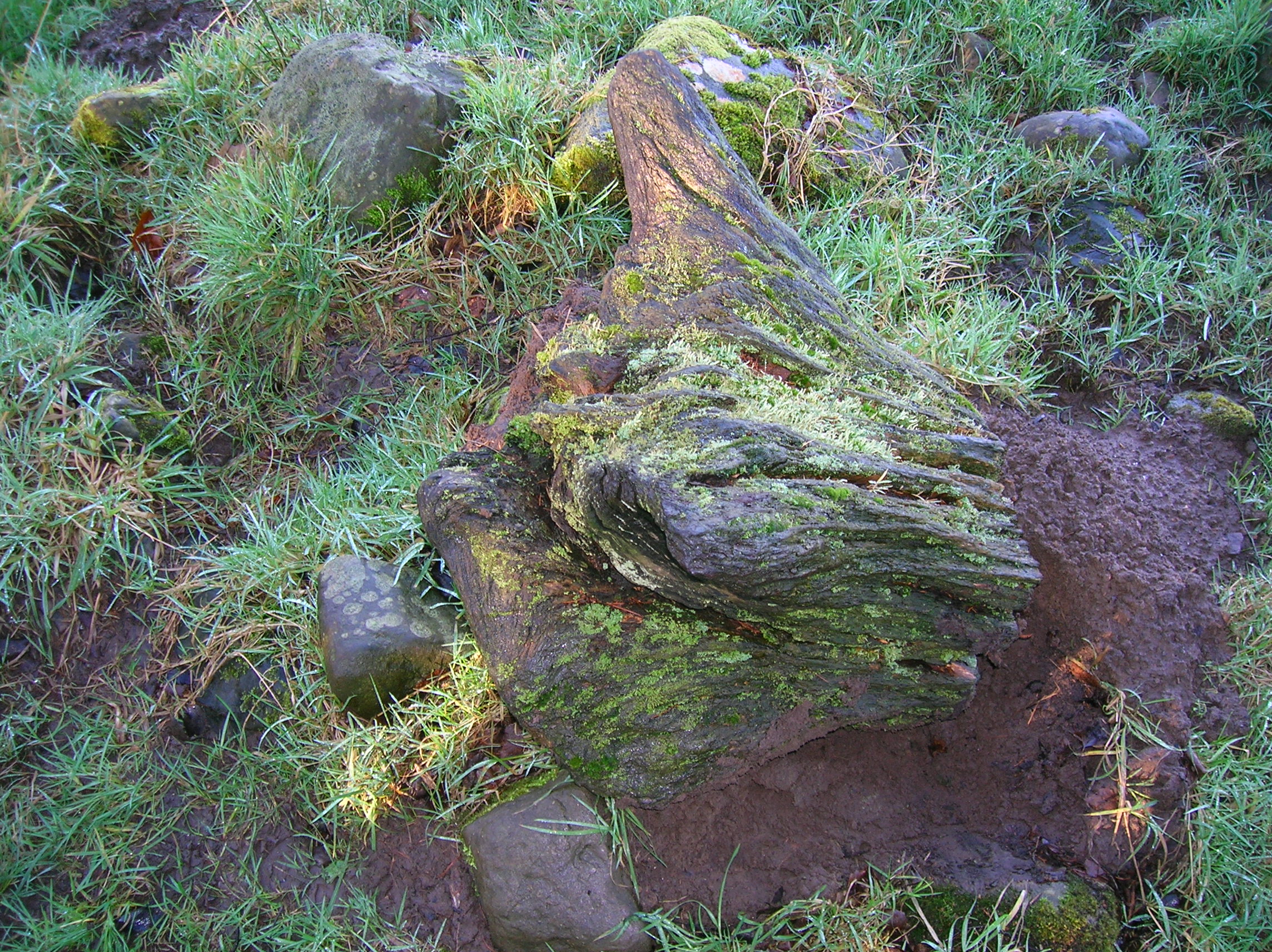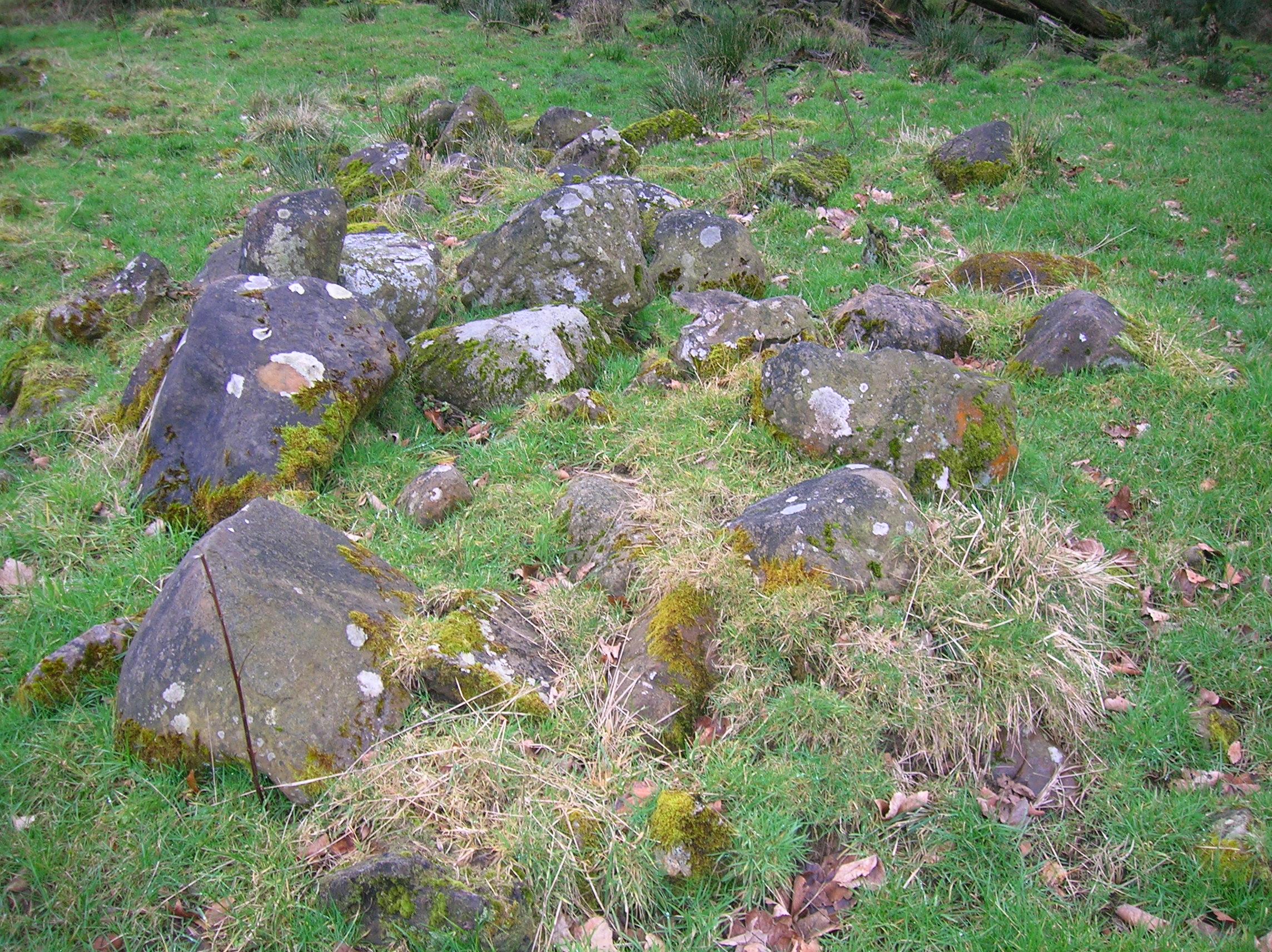Clearance Cairn on:
[Wikipedia]
[Google]
[Amazon]
 A clearance cairn is an irregular and unstructured collection of
A clearance cairn is an irregular and unstructured collection of

 By removing large and moderate size stones from the surface and sub-surface, ploughing can take place with much less potential damage taking place to the plough blade. Stones also prevent the growth of plants where they physically block access to the soil and their removal allows for a greater surface area for crops to grow and to allow for plants to grow to their full potential; Stones also increase drainage and may therefore deprive plants of moisture. Stones were removed from fields to allow for the efficient use of hand tools, animal powered machines on such fields in the past and for tractors, etc. in more recent times. Some prehistoric clearance cairns may also contain burials. A few clearance cairns may have been additionally created as boundary markers. As ploughing developed and specialised the greater depth tilled and the increased power of mechanised ploughing resulted in more and larger stones being brought to the surface and these too had to be removed.
By removing large and moderate size stones from the surface and sub-surface, ploughing can take place with much less potential damage taking place to the plough blade. Stones also prevent the growth of plants where they physically block access to the soil and their removal allows for a greater surface area for crops to grow and to allow for plants to grow to their full potential; Stones also increase drainage and may therefore deprive plants of moisture. Stones were removed from fields to allow for the efficient use of hand tools, animal powered machines on such fields in the past and for tractors, etc. in more recent times. Some prehistoric clearance cairns may also contain burials. A few clearance cairns may have been additionally created as boundary markers. As ploughing developed and specialised the greater depth tilled and the increased power of mechanised ploughing resulted in more and larger stones being brought to the surface and these too had to be removed.
 Field clearance cairns sometimes survive long after cleared fields have fallen out of use and are often the only surviving evidence of past agricultural activity in areas of woodland, upland areas, etc. The existence of these cairns was once regarded as suggesting pastoral farming. Many now consider them the result of arable or mixed agricultural exploitation enabling ploughing or hand tillage to work more efficiently.
Field clearance cairns sometimes survive long after cleared fields have fallen out of use and are often the only surviving evidence of past agricultural activity in areas of woodland, upland areas, etc. The existence of these cairns was once regarded as suggesting pastoral farming. Many now consider them the result of arable or mixed agricultural exploitation enabling ploughing or hand tillage to work more efficiently.

 Many clearance stones were used in the construction of defensive structures, houses, farm buildings, walls, drainage ditches, road metalling, etc. Where permanent clearance cairns were formed it was predominately on waste land, such as steep slopes, edges of woodland, field corners, and around earth-fast boulders.
The amount of stone which needed to be cleared from a field depended upon geology, glacial deposits,
Many clearance stones were used in the construction of defensive structures, houses, farm buildings, walls, drainage ditches, road metalling, etc. Where permanent clearance cairns were formed it was predominately on waste land, such as steep slopes, edges of woodland, field corners, and around earth-fast boulders.
The amount of stone which needed to be cleared from a field depended upon geology, glacial deposits,



 Cairns may be discrete, in large groups (cairnfields) or as linear formations—linear cairns. Many stones in clearance cairns show plough-marks or ard-marks at various angles to each other, typical of the Bronze Age ploughing methods. These ard-marks indicate that the boulders were obstructing the ploughing process and were in situ for some time before removal.
Other items such as
Cairns may be discrete, in large groups (cairnfields) or as linear formations—linear cairns. Many stones in clearance cairns show plough-marks or ard-marks at various angles to each other, typical of the Bronze Age ploughing methods. These ard-marks indicate that the boulders were obstructing the ploughing process and were in situ for some time before removal.
Other items such as
Commentary and video on Clearance Cairns. {{DEFAULTSORT:Clearance Cairn Agricultural land Artificial hills Landscape history Stone buildings .
fieldstone
Fieldstone is a naturally occurring type of stone, which lies at or near the surface of the Earth. Fieldstone is a nuisance for farmers seeking to expand their land under cultivation, but at some point it began to be used as a construction mate ...
s which have been removed from arable land or pasture to allow for more effective agriculture
Agriculture encompasses crop and livestock production, aquaculture, and forestry for food and non-food products. Agriculture was a key factor in the rise of sedentary human civilization, whereby farming of domesticated species created ...
and collected into a usually low mound or cairn
A cairn is a human-made pile (or stack) of stones raised for a purpose, usually as a marker or as a burial mound. The word ''cairn'' comes from the (plural ).
Cairns have been and are used for a broad variety of purposes. In prehistory, t ...
. Commonly of Bronze Age
The Bronze Age () was a historical period characterised principally by the use of bronze tools and the development of complex urban societies, as well as the adoption of writing in some areas. The Bronze Age is the middle principal period of ...
origins, these cairns may be part of a cairnfield (a collection of closely spaced cairns) where some cairns might be funerary. Clearance cairns are a worldwide phenomenon wherever organised agriculture has been practised.
Purpose of clearance

Heat radiation
Cairns built in the middle of enclosures can maximize the effect of daytime radiance, since reradiating absorbed sunlight from the stones raises nighttime field temperatures (very slightly) as in walled gardens. Since this effect would encourage crop growth (and potentially reduce the risk of frost) it may have been deliberately intended, though there is no direct evidence that cairns were built for this purpose.Creation
glacial erratics
A glacial erratic is a glacially deposited rock (geology), rock differing from the type of country rock (geology), rock native to the area in which it rests. Erratics, which take their name from the Latin word ' ("to wander"), are carried by gla ...
, etc. Many cairns are mainly composed of stones which could have been carried by a single person who would have followed the plough as it turned up small boulders, etc.
Most surviving cairns are from the Bronze Age
The Bronze Age () was a historical period characterised principally by the use of bronze tools and the development of complex urban societies, as well as the adoption of writing in some areas. The Bronze Age is the middle principal period of ...
but some are considerably older, because field clearance has been practised since the beginnings of agriculture in the Stone Age
The Stone Age was a broad prehistory, prehistoric period during which Rock (geology), stone was widely used to make stone tools with an edge, a point, or a percussion surface. The period lasted for roughly 3.4 million years and ended b ...
(such as at the Gardberg site
Gardberg Site (''Gardbergfeltet'') is an archaeology, archaeological site located east of the Einang Sound in the municipality of Vestre Slidre, Oppland County, Norway.
Description
Gardberg consists of several burial cairns and clearance cairns ...
in Vestre Slidre
Vestre Slidre is a municipality in Innlandet county, Norway. It is located in the traditional district of Valdres. The administrative centre of the municipality is the village of Slidre. Other villages in Vestre Slidre include Lomen and Røn.
...
, Oppland
Oppland is a former county in Norway which existed from 1781 until its dissolution on 1 January 2020. The old Oppland county bordered the counties of Trøndelag, Møre og Romsdal, Sogn og Fjordane, Buskerud, Akershus, Oslo and Hedmark. The ...
, Norway
Norway, officially the Kingdom of Norway, is a Nordic countries, Nordic country located on the Scandinavian Peninsula in Northern Europe. The remote Arctic island of Jan Mayen and the archipelago of Svalbard also form part of the Kingdom of ...
).
Characteristics
bog-wood
Bog-wood (also spelled bogwood or bog wood), also known as abonos and, especially amongst pipe smokers, as morta, is a material from trees that have been buried in peat bogs and preserved from Decomposition, decay by the acidic and wikt:anaerobic, ...
and grubbed out tree stumps were sometimes added to the cairns as a result of tree felling and the process of creation of pasture from woodland. Bog-wood stumps and trunks can be thousands of years old, are darker in colour due to the tannin
Tannins (or tannoids) are a class of astringent, polyphenolic biomolecules that bind to and Precipitation (chemistry), precipitate proteins and various other organic compounds including amino acids and alkaloids. The term ''tannin'' is widel ...
s from the peat and do not show typical wood decomposition characteristics due to their preservation within peat bogs. The absence of saw marks indicates felling using axes, providing further information about the age of the wood involved.
Some clearance cairns are linear in form. Many of the smaller cairns were probably created by family groups, whilst larger ones would have required organised labour.
Cairnfields have on occasions been confused with various other classes of monuments, such as round barrow cemeteries and groups of round barrow
A round barrow is a type of tumulus and is one of the most common types of archaeological monuments. Although concentrated in Europe, they are found in many parts of the world, probably because of their simple construction and universal purpose. ...
s, stone hut circles, ring cairns, or burnt mound
A burnt mound is an archaeological feature consisting of a mound of shattered stones and charcoal, normally with an adjacent hearth and trough. The trough could be rock-cut, wood-lined or clay-lined to ensure it was watertight. Radiocarbon d ...
s. In general round barrows are larger, more regular, and may contain visible traces of a cist or kerb; stone hut circles have distinct entrances; ring cairns have a hollow centre; and burnt mounds contain a high proportion of fire-crazed stones of rather smaller size than appear in the average clearance cairns within cairnfields.
Natural deposits such as so called 'clitter agglomerates', moraines can also on occasion look rather similar to groups of clearance cairns, but their context, position and regular form usually betrays their true origins.
Clearance cairn material is often heterogeneous, typically consisting of both edged and rounded small stones, sometimes mixed with sand, clay or silt, lifted from the field nearby. Agricultural and clearance cairns are sometimes located on slopes, whilst burial cairns rarely are.
Clearance cairns constructed using mechanised methods with horse or motor powered assistance may appear superficially similar, however the stones are generally much larger and they are more randomly tipped rather than hand placed.
Natural history
Due to the age and 'abandoned' state of many clearance cairns, they are often good sites for the growth and survival of lichens, mosses, ferns and other plants; the actual species being dependent on the rock type. Cairns are relatively undisturbed and emulate old walls for the micro-habitats they produce.Landscape history
In some areas which are now unproductive moorland, aerial photographs show the presence of numerous prehistoric clearance cairns and associated dwellings such as hut-circles. This clear evidence of previous ancient habitation and cultivation shows that the climate worsened until the farmers were forced to move to lower ground.Stone carrying
Stone carry or the stone walk is a traditional Scottish athletic event involving the carrying of large stones down the field of competition; the competitors pick up two heavy stones with iron handles, and carry the pair as far as they can. The sport may have grown out of the act of clearing stones from fields to create pastures and arable land.See also
* Stone picker *Fieldstone
Fieldstone is a naturally occurring type of stone, which lies at or near the surface of the Earth. Fieldstone is a nuisance for farmers seeking to expand their land under cultivation, but at some point it began to be used as a construction mate ...
References
External links
*Commentary and video on Clearance Cairns. {{DEFAULTSORT:Clearance Cairn Agricultural land Artificial hills Landscape history Stone buildings .